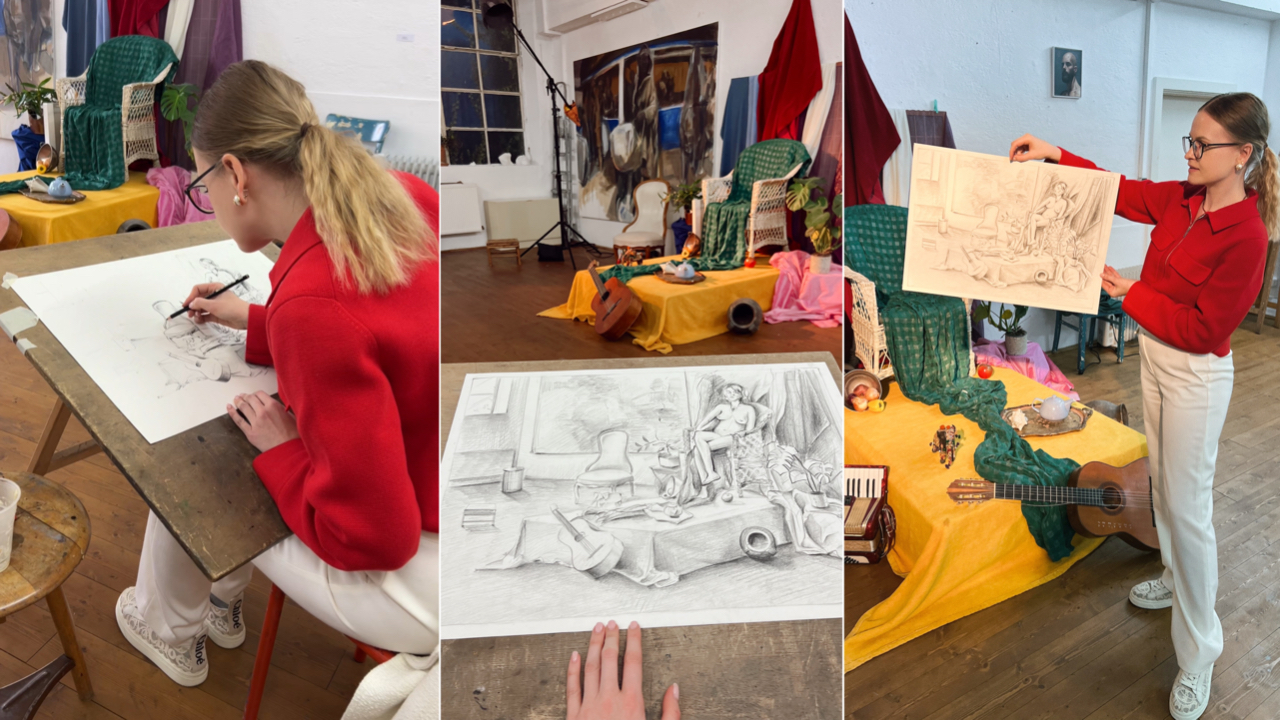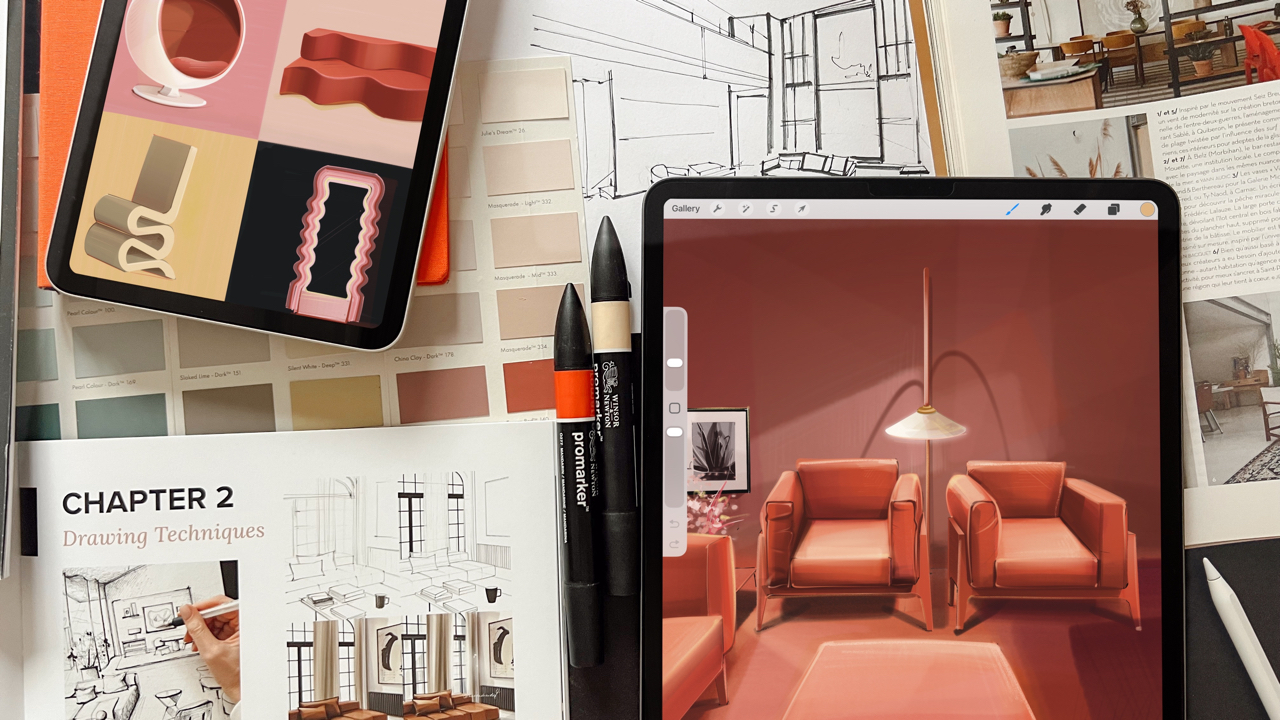Realism in Art: Foundation for Innovation
Oct 24, 2024
As you’re reading this newsletter, I’m sketching at the Porsche Museum using a super quick sketching technique on my new iPad mini, which I purchased especially for traveling 🥹 By the way, if you’re unsure which iPad to pick, remember that I wrote a guide on how to choose the right iPad with practical examples, not just technicalities that only tech people can understand!
Now, I want to ask you: have you ever felt that your drawings (or some you’ve seen) look way too realistic, just like everyone else’s who works in a similar style? Good news upfront - this is a completely natural aspect of every artist, and today, I’ll provide you with examples from those who gained worldwide recognition with their art, along with insights from my own experience. By the end, you'll see this phase as an inevitable step in your artistic growth.
👇
We learn the rules first before breaking them - this is perfectly applicable in the world of art. You’ve heard me mention multiple times that foundations bring confidence and joy in your work, allowing you to avoid guessing the next steps or whether the picture will turn out beautifully. With strong foundations, it’s crucial to know when to stop and let your full spectrum of creativity flow.
Take Willem de Kooning, for example. His early works were quite realistic, showcasing his strong grasp of form and detail. However, as he grew as an artist, he began to explore and practice abstraction, allowing his creativity to break free from traditional rules.
Now, let’s talk about an iconic moment in art history involving Pablo Picasso. He was once dining in a café when a woman who admired his work approached him, asking for a quick sketch. Without hesitation, Picasso grabbed a napkin and created a drawing in mere seconds. When he told the woman it was worth tens of thousands of dollars, she was shocked. But he then added, “I spent over 20 years to be able to do this.” I’ve paraphrased, but I really like how this story captures the importance of what I’m sharing with you today.
Picasso had spent years mastering his skills, starting with realistic drawings before diving into abstraction. His deep understanding of form, color, and composition allowed him to distill his thoughts into that simple sketch effortlessly. Going through the deep phase of realism in your work is an absolutely natural process that builds up your confidence and skills, enabling you to illustrate and visualize anything on your mind.
Going through the deep phase of realism in your work is an absolutely natural process that builds up your confidence and skills, enabling you to illustrate and visualize anything on your mind.
At this stage, I’d like to add something from my own experience. Sometimes, it’s quite difficult to see when exactly that switch from realism to true art happens. How can you predict it? ↓
1️⃣ Always keep the project’s goal in mind. When working with clients on an interior project, it’s crucial to see the idea clearly and not in an abstract manner. However, I’ve developed my approach where I add chaotic marker strokes, like shadows that don’t even have the shape of the element whose shadow it is. This is my way of adding art into realism, and it’s the approach I teach in my ASDB Academy, helping my students turn their designs into real works of art that stand out in a sea of other interior sketches.
2️⃣ How quickly you master the drawing-from-scratch technique will define how fast you can work on your own projects. Oh boy, I will never tire of saying this: learn how to draw, NOT just how to outline images. What if a client asks you to create a spontaneous sketch of a space on the go? (That happened to me during a series of interviews for my dream job, which I landed right before the pandemic - read the story HERE.)
3️⃣ Every opinion is subjective. If you like your new style, which looks slightly different from your realism, then that’s the direction to go. It’s important to focus on YOU, not your neighbor, friend, or that art critic. Remember, only those who spread criticism are often not trying themselves and are probably dreaming about what you do.
4️⃣ You’ll start intuitively experimenting with styles, just like Estelle, one of our ASDB students, did. She shared her concern about her drawings being too realistic, but she also started experimenting right after identifying that creative block. Estelle, if you’re reading this, thank you for sharing your journey with us at the ASDB Academy!
And we’ve come to the end of this incredibly informative newsletter. The topic of art and design is something I discover daily in various forms, and it’s been a true pleasure to share my discoveries with you. Below, I’ll list my drawing resources that will help you start drawing in a guided and enjoyable way:
- Free drawing workshop to learn and practice digital drawing, implement AI into your design work, and learn how to draw to scale (bonus tutorial during the workshop).
- Brand new mini course: “Quick Start in Digital Interior Design.”
- My signature program with 100+ detailed step-by-step video tutorials, lifetime access, community, brushes, and LIVE calls with me.
Lots of love,
Anna at @andshedrawsbig
Out of the Box Creative Mindset: ASDB blog series
This blog is a treasure trove of insights, tips, and inspirations, inviting you to explore the transformative power of an out-of-the-box creative mindset. Discover how creativity shapes spaces, sparks innovation, and empowers your approach to digital drawing. Welcome to a space where creativity knows no limits!
Start exploring:





